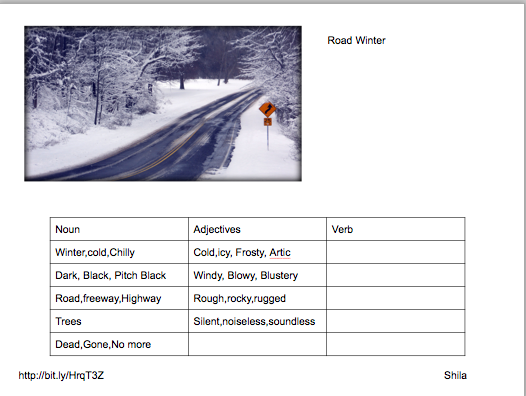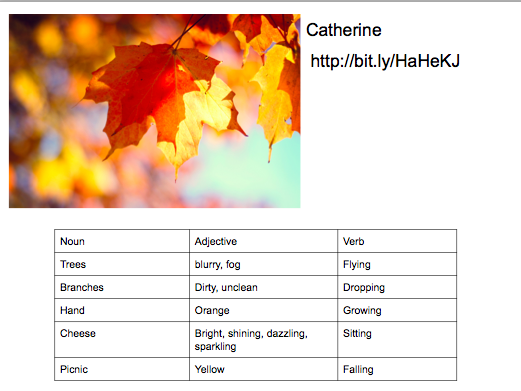We have been working on Haiku in my grade 6 Language B (low-language level students) class. I have been trying a new scaffolding assignment that I would like to share. Before I continue, let me state that I understand that poetry in general, and Haiku in particular, are best enjoyed alone and outside. Let me save you from your own argumentative voice, that is begging you to scream:
“What? Using computers to write Haikus? Get those kids outside and let them feel the nature!”
True. I agree, but I am dealing with grade six students who lack the vocabulary, the motivation, or the life experience to sit like the Buddha under a tree and see the universe in a dew drop. So I am using media and technology to help them get to that mental head space, by building their skills and knowledge of language. This assignment is not meant to replace authentic poetic experience, but to help students understand it, and hopefully by the end of the unit be able to write a decent Haiku after spending a meditative period outside with nothing but a scrap of paper, a pen or pencil, and the wisdom of a silent moment beneath a tree.
Let’s start with the nuts & bolts. We have been working with images all year. After their daily shoot assignment for our last unit on film, students should now be familiar with the basic idea of capturing a poetic moment through images. The hope is that making the jump to capturing a poetic moment through text will not be too difficult. We have spoken a lot about how poetry is the art of of recognizing and naming the unnameable. We can do this through the lens of a camera or through the power of language.
In addition to taking their own pictures, they have used Flickr and the pool of amazing Creative Commons photographs there to supplement their language, so it was with Flickr that we began.
I asked each student to find four Creative Commons pictures from Flickr that embrace and celebrate nature. Choose one from each season and try to include each element: Winter, Spring, Summer, Fall + Earth, Water, Fire and Air. I thought these images would be conducive to Haiku later. They were reminded to cite each photo and keep track of the URLs for later use. This has become a habit I am proud of.
Next, I created a Google Presentation as a place to pool our images. This way, I could keep track of who was doing what and comment on their choices in one place. This also allowed them to see what types of photo their peers were choosing. They added their name and the URL of the image to each slide.
Then, they were asked to brainstorm a list of words that came to mind when looking at these images. I walked around and sat with kids to help the ones who were stuck. Next we did a quick lesson on parts of speech and discussed Nouns, Adjectives, and Verbs. I asked that they create a three-column table on the slide and separate their list into the correct part of speech. We discussed how most of them lacked verbs.
But there are no actions in nature? What can a tree do?
Ah young grasshopper, this is the soul of the Haiku! But I didn’t say anything yet. Next step, I asked that they find some synonyms for the adjectives. Take a look:
Yesterday, we began to discuss Haiku. We spoke about the 5-7-5 structure of the lines, syllables, and I gave them this format to get started:
- First line- Describe an object or scene (Adjective +Noun)
- Second line– Give this object or scene an action (Verb)
- Third line– What is the lesson?
I have been impressed with the quality of images and words they have been using. As you can see, by using tech I was able to give these kids the skills and language they need to connect to Haiku. I hope that next week, we can leave the laptops behind and go outside to observe. I hope that we can sit near a flower, make a list of words, separate them into lists and begin to write. Better yet, I hope that they begin to see the Haiku hiding in their everyday lives.
In closing, we are hoping to create a class collection of Haiku to publish in a book and perhaps a short film in which students read their Haiku over the pictures with some sound effects. Will keep you posted.


